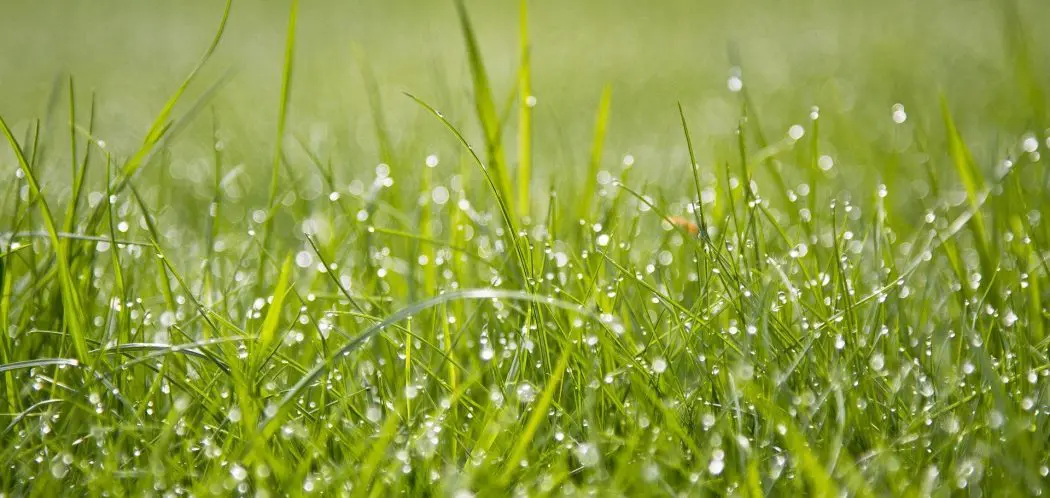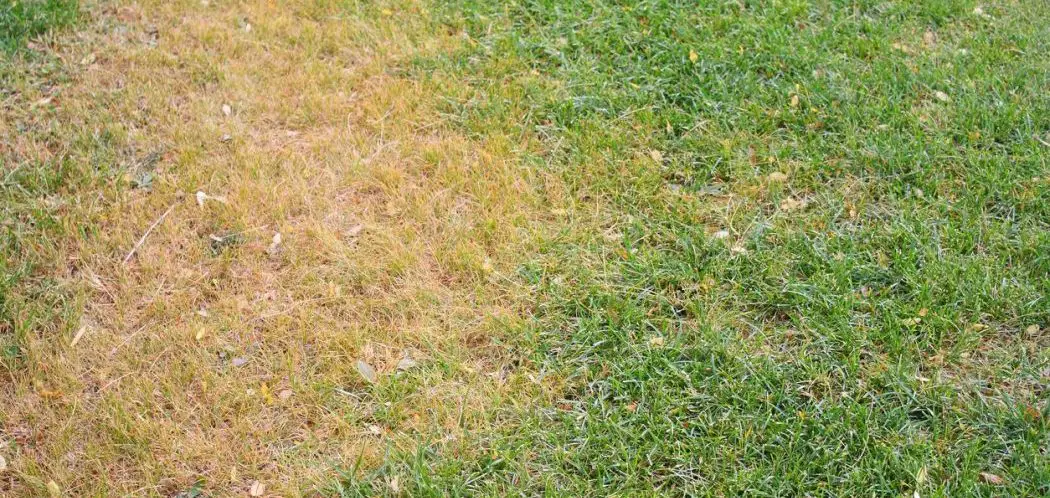Since grass is a plant, it’s always susceptible to certain types of fungal infections but applying a fungicide occasionally can help your grass stay healthy and thrive for a lot longer. Before you can do this, it’s useful to know when and how to apply the fungicide even though a lot of that will depend on where you live and the type of grass you have.
As a general rule, you should apply fungicide when the conditions are hot and wet. This is when fungus is more likely, not less likely to be a problem.
Can you apply fungicide to wet grass?
Fungicides can be applied to wet grass. Fungicides work much better when the weather is more likely to produce fungus in the first place. Hot and wet conditions that make the grass more susceptible to fungal infections means the fungicide will be absorbed better and faster too.
Getting Started: When and How
Using a prepared fungicide that is sprayable is typically the easiest type to work with. Although you should only apply fungicide when conditions are more favorable to fungus and different types of fungal infections, you also don’t want the temperature to be too hot. If the temperature is above 90 degrees Fahrenheit, wait until it gets a bit cooler.
Below are some more tips that can help you get the most out of your fungicide treatment.
- Apply the fungicide in the morning hours when it’s a little cooler.
- Always prepare the fungicide according to the directions on the package and never stray from those directions. You may have to dilute the product with water; if so, make certain the ratio is correct.
- After you prepare the mixture and it’s in your sprayer tank, spray onto the grass until you notice dripping from each blade. In other words, the grass needs to be wet with this mixture. Using a nozzle that sprays at around 60 PSI should do the trick.
- Always follow the directions on the package and reapply the mixture exactly as those directions suggest. You’ll find that some recommend that you reapply every week, while others suggest once a month. This is because different products contain different ingredients but the manufacturer will know how often the mixture needs to be applied to keep your grass healthy.
- Don’t forget to use gloves and safety glasses when applying the fungicide. Although most products are overall very safe, you’ll still want to protect yourself from any excess fumes that you might inhale as you work.
A few other tips you should keep in mind when applying fungicide to your grass…
- Never apply fungicide to new grass that is still growing, especially if it has recently been planted. You can damage seedlings if you spray them with fungicide.
- Never assume you don’t have to continue watering your grass just because you’re using a fungicide regularly. You’ll still have to continue with your regular watering schedule from now on.
A Few Important Tips to Remember: Some Helpful FAQs
Applying fungicide is simple but that doesn’t mean there aren’t tips that can help you take even better care of your grass. Below are some frequently asked questions that can provide you with some valuable information for your fungicide application.
Q: Are There Different Types of Fungicide?
A: Yes, there are two main types. Systemic fungicides are absorbed into the roots of the grass and work from within to get rid of fungus. Contact fungicides form a protective layer on top of the grass and prevent fungus from happening in the first place.
Q: Should I Water the Grass After Applying the Fungicide?
A: It depends on the type of fungicide you’re using and what the instructions tell you to do. As a general rule, systemic fungicides should be watered after application because they need water to work properly. By contrast, contact fungicides cannot be watered afterward because the protective layer they provide will be washed off and therefore useless. Always remember to follow the product directions.
Q: Can I Apply a Fungicide and an Insecticide/Fertilizer at the Same Time?
A: Normally you can, but if you’ve applied a lot of fungicide in the past several months, you might want to wait three to five days after the fungicide is applied to apply either insecticide or fertilizer.
Q: How Long Do Fungicides Take to Work?
A: It will depend on the type of fungicide you use. Nevertheless, most fungicides start working within 24 hours and can control various infections and diseases for up to four weeks depending on the brand itself.
Q: Can I Put Too Much Fungicide on My Lawn?
A: Yes. Although the blades need to be wet, too much can actually damage both the grass and the roots. Different brands require different amounts of fungicide.
In Summary
A good fungicide is an important part of keeping your lawn healthy, lush and green. Applying fungicide properly isn’t difficult, expensive or even time-consuming, but you do have to do it the right way for it to be effective. Start by talking to a lawn and garden expert and choosing a fungicide that is appropriate for your particular type of grass. Between this and making sure you apply the fungicide properly and you should continue to have a healthy lawn.







